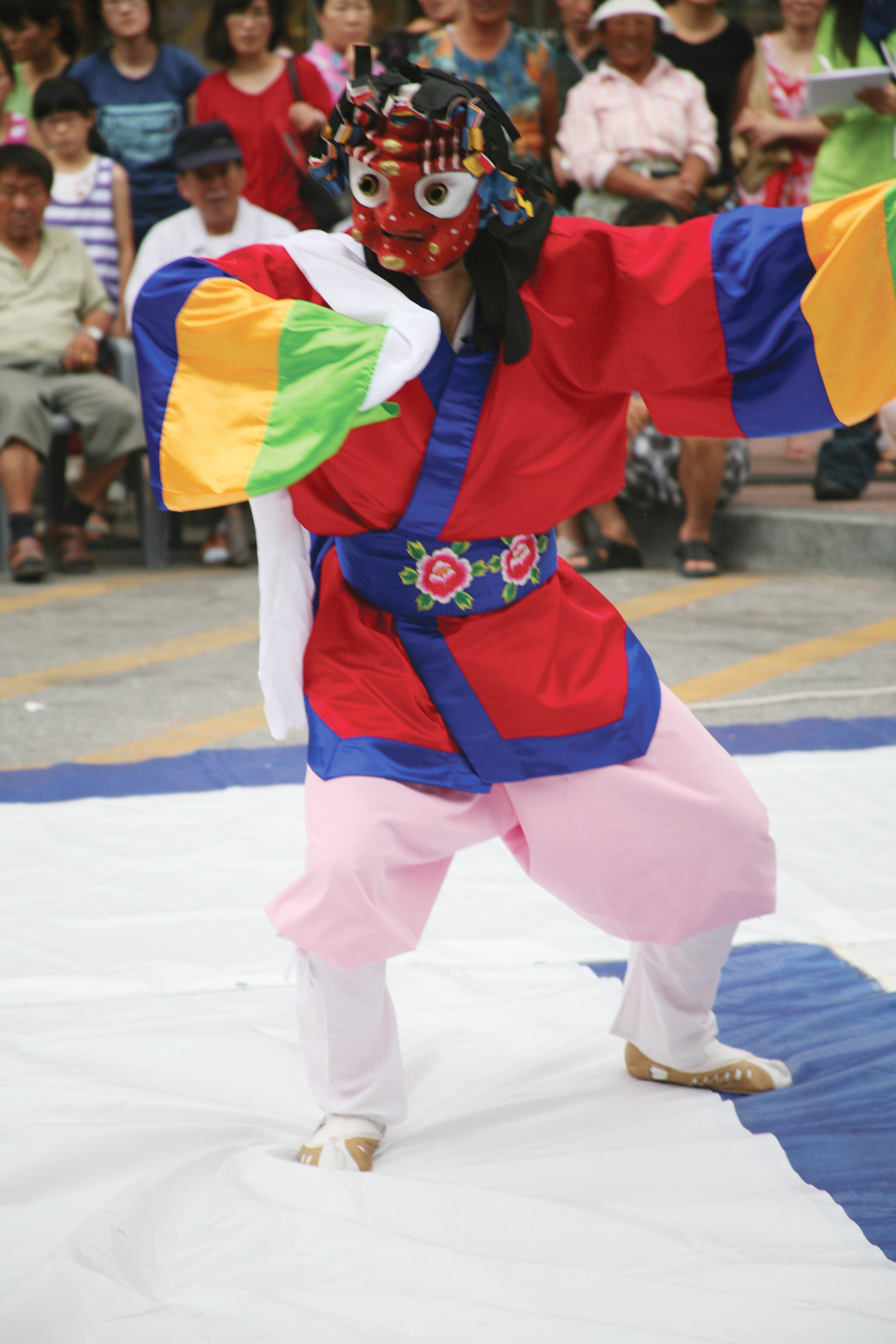- Talchum
Infobox Korean name

imgwidth=200
caption=
hangul=탈춤
hanja="none"
rr=talchum
mr=t'alch'um"Talchum" is a
Korean dance performed while wearing a mask and singing. It is not just a dance performed by masked dancers but also a drama with masked characters portraying persons, animals or supernatural beings. These folk dramas reflect the antipathy and resentment felt by the common people towards the nobility, due to the latter's harsh and severe treatment of the commoners.Characteristics
Mask dance dramas share fundamental characteristics, even though it varies slightly according to region and performer. They are based on a sense of rebellion felt by the common people toward the reality of their lives. Their basic themes are exorcism rites, ritual dances, biting satire, parody of human weaknesses, social evils and the privileged class. It appeals to its audiences by ridiculing apostate Buddhist monks, decadent noblemen, and shamans. Another popular theme is the conflict between an ugly wife and a seductive concubine. With regional variations, the mask dance drama was generally performed on the First Full Moon, Buddha's Birthday on the Eighth of the Fourth Moon, Dano Festival and Chuseok. It was also performed at festive state occasions or at rituals to supplicate for rain. The enthusiastic participation of the audience is the most remarkable feature of Korean mask dance drama. There is little distinction between the actors and the audience toward the end of a performance, as they join together in robust dance and bring it to a finale.
tyles
Mask dance dramas have been transmitted from all parts of the country. There are about thirteen different types of "Talchum" ―
Hwanghaedo province's "Haeseo" style, such as "Bongsan", "Gangnyeong", the "Eennyul" Mask Dances; theGyeonggido province's "Yangju Byeolsandae", "Songpa Sandae" Mask Dances; theGyeongsangnamdo province's "Suyeong Yayu", "Dongnae Yayu", "Ggasan Ogwangdae", "Tongyeong Ogwangdae", "Goseong Ogwangdae";Gyeongsangbukdo province's "Hahoe Byeolsandae Nori";Gangwondo province's "Gwanno" Mask Dance; and the "Namsadangpae" (Male Itinerant Entertaining Troupe of the Northern Line) "Deotboegichum" Mask Dance. Among those, the "Bongsan Talchum" and "Songpa Talchum" are most well-known. "Songpa Talchum" settled in the area about 200 years ago and at that time it was performed on traditional Korean holidays. The "Bongsan Talchum" was passed on from theHaeseo area and was played in May.Gallery
References
*Chae, Heewan. “The idea of Talchum.” Seoul: Hyunamsa, 1984
* [http://www.maskmuseum.com/ "What is mask." Hahoe Mask Museum] retrieved 29 June 2008
*Kim, Joo-yeon. "Talchum: Korean masked dance." The KNU times, 1 November 2006
*Kim, Ukdong. "The aesthetics of Talchum."Seoul : Hyunamsa, 1999
* [http://www.santaclaritamagazine.com/ "Korean Mask Dance Drama: Talchum." The magazine of Santa Clarita] retrieved 29 June 2008
* [http://asia.msu.edu/eastasia/SouthKorea/theater.html "Mask Dances." Asian Studies presents Windows on Asia] , retrieved 29 June 2008
* [http://www.koreanculture.org/ "Mask and Dance." Korean cultural Services NY] , retrieved 25 June 2008
* [http://english.chosun.com/english/contents/magazine/2000/Attraction200010_2.html "Talchum." Digital Choseonilbo] retrieved 29 June 2008
* [http://perform.kcaf.or.kr/gosung/eng01.asp "Talchum."] , retrieved 29 June 2008
* [http://pr.korean.net/eng/koview/koview_08.jsp "The Nature and Origin of Masked Dance Drama." Hangukgwan] , retrieved 29 June 2008External links
Wikimedia Foundation. 2010.
